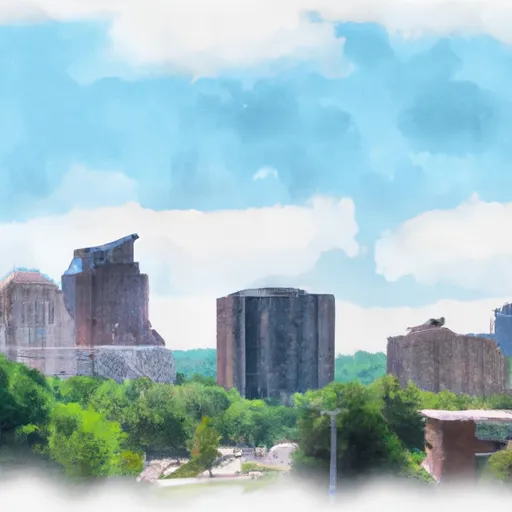-
 Snoflo Premium
Snoflo Premium
Get unlimited access to all our content
With no Ad interruptions! - Start Your Free Trial Login with existing account
West-Bethesda
Eden Index
Climate
8.3
•
Recreation
6.3
•
Community
8.9
•
Safeguard
7.7/10

West Bethesda, Maryland is located in Montgomery County, just northwest of Washington, D.C. The climate in West Bethesda is classified as humid subtropical, characterized by hot and humid summers, mild winters, and moderate rainfall throughout the year. Summers see average temperatures ranging from the mid-70s to low 90s Fahrenheit, while winters average in the mid-30s to mid-40s Fahrenheit.
Hydrologically, West Bethesda is part of the greater Chesapeake Bay watershed. The area is surrounded by several small streams and creeks, contributing to the local hydrology. These waterways provide opportunities for recreational activities such as fishing, kayaking, and canoeing.
Outdoor enthusiasts in West Bethesda can explore various parks and green spaces nearby. Cabin John Regional Park, located just south of West Bethesda, offers a range of activities, including hiking trails, picnic areas, tennis courts, and a nature center. Glen Echo Park, situated to the east, provides art workshops, concerts, and a historic carousel. These recreational spaces offer residents and visitors opportunities to enjoy the natural beauty and engage in outdoor activities in West Bethesda, Maryland.
What is the Eden Index?
The Snoflo Eden Index serves as a comprehensive rating system for regions, evaluating their desirability through a holistic assessment of climate health, outdoor recreation opportunities, and natural disaster risk, acknowledging the profound impact of these factors on livability and well-being.
Climate Health Indicator (CHI): 8.3
West-Bethesda receives approximately
1112mm of rain per year,
with humidity levels near 80%
and air temperatures averaging around
14°C.
West-Bethesda has a plant hardyness factor of
7, meaning
plants and agriculture in this region tend to thrive during the non-winter months.
By considering the ideal temperature range, reliable water supplies, clean air, and stable seasonal rain or snowpacks, the Climate Health Indicator (CHI) underscores the significance of a healthy climate as the foundation for quality living.
A healthy climate is paramount for ensuring a high quality of life and livability in a region, fostering both physical well-being and environmental harmony. This can be characterized by ideal temperatures, reliable access to water supplies, clean air, and consistent seasonal rain or snowpacks.
Weather Forecast
Streamflow Conditions
Potomac
Area Rivers
Potomac
Snowpack Depths
Potomac
Reservoir Storage Capacity
Potomac
Groundwater Levels
Recreational Opportunity Index (ROI): 6.3
The Recreational Opportunity Index (ROI) recognizes the value of outdoor recreational options, such as parks, hiking trails, camping sites, and fishing spots, while acknowledging that climate plays a pivotal role in ensuring the comfort and consistency of these experiences.
Access to outdoor recreational opportunities, encompassing activities such as parks, hiking, camping, and fishing, is crucial for overall well-being, and the climate plays a pivotal role in enabling and enhancing these experiences, ensuring that individuals can engage in nature-based activities comfortably and consistently.
Camping Areas
| Campground | Campsites | Reservations | Toilets | Showers | Elevation |
|---|---|---|---|---|---|
| Smallwood State Park | 15 | 16 ft | |||
| Lake Fairfax | None | 321 ft | |||
| Burke Lake Park | None | 327 ft | |||
| Little Bennett Regional Park | 90 | 644 ft | |||
| Pohick Bay Regional Park | 150 | 126 ft | |||
| Prince William Forest RV Campground | 24 | 270 ft | |||
| Fort Belvoir Travel and RV Camp | 52 | 132 ft | |||
| Champs RV Military - A P Hill | None | 220 ft |
Nearby Ski Areas
Catastrophe Safeguard Index (CSI):
The Catastrophe Safeguard Index (CSI) recognizes that natural disaster risk, encompassing floods, fires, hurricanes, and tornadoes, can drastically affect safety and the overall appeal of an area.
The level of natural disaster risk in a region significantly affects safety and the overall livability, with climate change amplifying these risks by potentially increasing the frequency and intensity of events like floods, fires, hurricanes, and tornadoes, thereby posing substantial challenges to community resilience and well-being.
Community Resilience Indicator (CRI): 8.9
The Community Resilience Indicator (CRI) recognizes that education, healthcare, and socioeconomics are crucial to the well-being of a region. The CRI acknowledges the profound impact of these elements on residents' overall quality of life. By evaluating educational resources, healthcare accessibility, and economic inclusivity, the index captures the essential aspects that contribute to a thriving community, fostering resident satisfaction, equity, and social cohesion.

